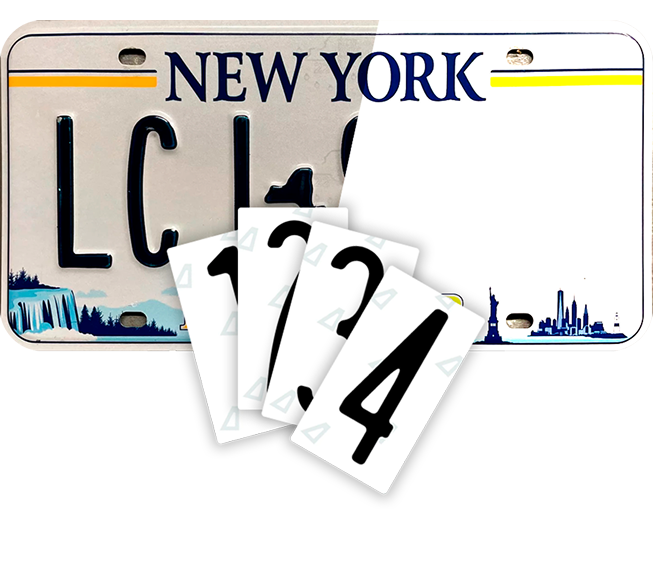Most drivers assume they’ll know when they’ve been photographed - maybe a flash, a sound, or a physical notice. But the truth is, most license plate tracking today happens without you ever knowing. There’s no dramatic click, no warning light, and no obvious sign that your vehicle has just been logged into a database.
Modern traffic enforcement uses a mix of infrared (IR) scanning and high-speed flash technology to record plate numbers at any time of day. These systems don’t rely on visible light. Even at night, in rain, or during heavy traffic, they work silently and instantly. And because they’re built into street poles, toll gantries, and parked vans, you rarely know when they’re even nearby.
Your license plate can be scanned in countless scenarios - while passing through a toll booth, stopping at a red light, driving through a school zone, or even while parked in a private lot. Often, you won’t notice the scan at all. There’s no visible flash, no beep, and no alert. The scan might take milliseconds, but its effects can follow you for weeks.
You may only realize it happened when a fine arrives in the mail days later - or when you’re notified that your vehicle was seen in a restricted area. Because of this, more drivers are turning to tools like an infrared number plate blocker - a discreet, passive solution designed to limit how easily cameras can lock onto your plate without you ever realizing you were a target in the first place.

Folding frame Alite Flipper
Stealth in a click
test
Learn moreHow Flash and Infrared Really Capture Your Plate
Infrared systems operate outside of the visible spectrum, which means they can “see” in complete darkness. While the human eye sees nothing, the camera gets a crystal-clear image. Combine this with high-speed shutter flashes, and you’ve got a near-perfect scan - even if your car is moving at 70mph.
The technology works by using:
- Infrared beams to detect reflective contrast on your plate
- Camera flashes to enhance visibility in poor lighting
- AI pattern matching to correct blur or dirt
- Dual-angle capture to prevent misreads
This makes traditional methods - like tinted covers or license plate sprays - ineffective. These systems don’t care if you darken the plate to the eye. They see through it using IR feedback.
To combat this, drivers are looking for smarter options. A high-performance license plate privacy cover must reduce infrared bounce, blend visually with the plate, and not trigger suspicion.
That’s where Nanofilm Ecoslick comes in: a film-based blocker that reduces IR visibility without altering the plate’s visible appearance.

Nanofilm Ecoslick Material
Anti-radar material
test
Learn moreWhy Nanofilm Ecoslick Is the Best Anti-Camera License Plate Cover UKDrivers Choose
In the UK, where ANPR (Automatic Number Plate Recognition) cameras are widespread and fines are often automated, protection needs to be discreet and reliable. That’s why many consider Nanofilm Ecoslick the best anti-camera license plate cover UK drivers can buy.
What sets Ecoslick apart is its intelligent material - a black, matte film that sticks directly to your plate’s characters. It doesn't cover the entire plate or use frames. Instead, it works by reducing the way infrared reflects off the digits - making them harder to detect and track.
Benefits of Nanofilm Ecoslick:
- No electricity, buttons, or mechanical parts
- Works in all weather conditions
- Cannot be detected by the naked eye
- Doesn’t distort the look of your license plate
- Compatible with most UK and EU plate formats
Or view other privacy options at Alite
If you drive in monitored areas frequently, Ecoslick offers a passive, affordable, and low-profile defense that works - even when you don’t realize you’re being scanned.

Nanofilm Ecoslick
Anti-radar stickers
test
Learn moreWhy Your License Plate Cover Camera Blocker Might Be Useless
Not all license plate blockers are created equal. While many drivers turn to traditional options like mirrored frames, plastic covers, or smoked shields, these products are increasingly ineffective against modern ALPR systems.
Most of the old solutions only interfere with visible light, but modern cameras rely heavily on infrared and contrast algorithms to decode plate numbers in any condition. What looks dark to the human eye may still appear perfectly readable to a scanner.
Additionally, bulky blockers or dark shields can raise suspicion from law enforcement, potentially drawing more attention than protection. In some regions, they may even be considered a modification - something that can lead to a stop or inspection.
That’s why newer approaches, like Nanofilm Ecoslick, are more effective. Instead of blocking the plate visually, it subtly reduces infrared visibility without changing how your plate looks to the eye. Unlike a traditional license plate cover camera blocker, it blends into the digits themselves and works silently - no glare, no hardware, no legal complications.

Alite Nanotapes
Click and Stick
test
Learn moreChoosing a Reliable License Plate Privacy Cover That Actually Works
The ideal license plate privacy cover isn’t about gimmicks - it’s about understanding how you’re tracked and building a passive barrier that cameras can’t easily bypass.
While cheap sprays and flashy covers may sound convincing, they often stop working the moment the tech gets smarter - and it always does. That’s why long-term protection means investing in a solution that doesn’t rely on deception, but design.
Nanofilm Ecoslick isn’t just a sticker. It’s a precision-cut film created to block specific IR wavelengths used by enforcement cameras. Instead of looking illegal or obvious, it becomes part of your plate’s natural surface - protecting you with zero visibility change.
From daily commutes through speed zones to unexpected toll scans, it works in the background - keeping your movements off the radar.

Alite Blackout
Stealth in a сlick
test
Learn moreCheck Out: License Plate Protection on a Budget




















